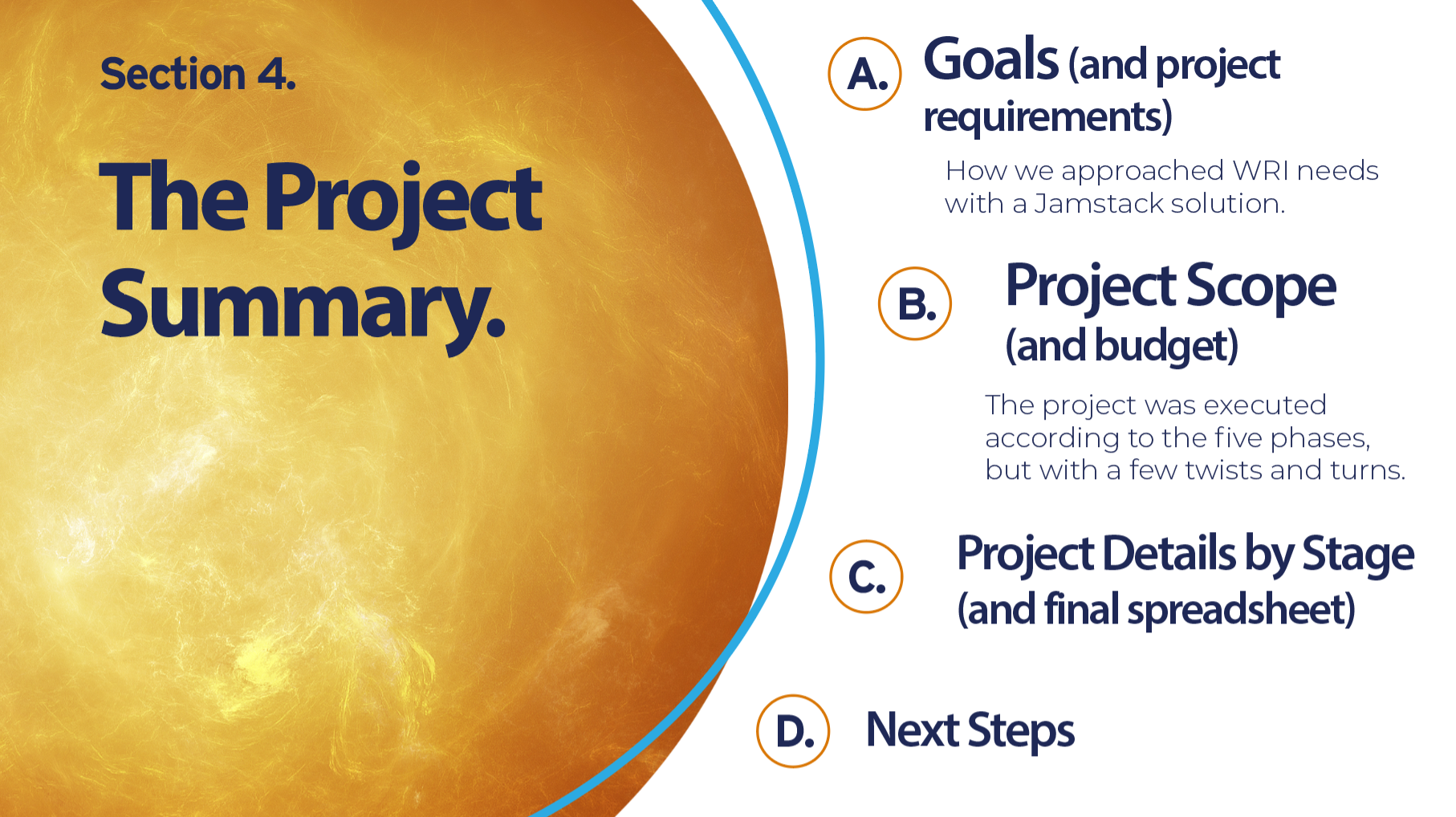Project Summary
WRI Website Project Goals & Objectives

We Achieved our Goals!
We have achieved our key goals for the new WRI website:
A. Better Promote and Sell the WRI Conference
B. Improve Information Organization & Event Registration
C. Support Replication & Archival of Past Events using a Clonable Codebase
Expanding on these Goals
Improved Design and Branding
The new design meets the objective of improving the promotion and sales of the WRI Conference to our key audiences. As a team, we have achieved this by enhancing the event's branding, visibility, and appeal. Ultimately, the Jamstack site expanded the reach of the audience as evidenced by increased traffic.
Streamlined Information and Registration Process
Another objective met was improving the organization of information and re-engineering the registration process, offering a more intuitive user experience from start to finish. A good example of this is providing multiple ways to get to the three key seminars (top nav, iconic icons, and footer). Better segmenting the three major registration categories and tiers, combined with the methodical registration track within Cvent, helped us to achieve this objective.
Ability to Clone the Code Base for Annual Conferences
By building the codebase with the popular React library using Git Version Control, we can immediately replicate the codebase year over year in a matter of minutes. This provides a means of archiving old content effectively as each year will be its own separate website, but it has many other benefits even beyond this objective.
Content Management System: Empowering Editors
Each year, the biggest challenge to updating the website for the annual conference is speakers' bios & abstracts. With the integration of Storyblok CMS, now anyone can edit speakers' bios & abstracts and publish to our live production site! Other portions of the site are set up to be enabled as well should we choose to.
Additional Business Objectives
I'll be expanding on these in a future blog post, but we met numerous other important business objectives or are seeing those objectives come to fruition as we enter the next conference year.
User Satisfaction: Across all devices — desktop, tablet, and phone — we ensured a smooth and responsive user experience, leading to greater satisfaction among site visitors.
Rapid Page Loading: We achieved swift website load times, consistently delivered across the globe via an Edge Network, ensuring that visitors experience minimal latency.
Improved SEO and Higher Rankings: Our efforts resulted in the website achieving a perfect score in Google's performance metrics, which will improve WRI's search engine positioning over time.
Composable Architecture: We successfully integrated the website into a larger ecosystem of modular components. This became handy when creating the event schedule, for example. This section started as a template which we modified much more quickly than if we built it from scratch.
Cost Efficiency: While only in its early stages, we have started to reduce the ongoing operational costs, realizing the promise of running the site at a lower expense with React, Netlify hosting, and our integration microservices.
Editor Access: The setup with Storyblok provides editors with a user-friendly, browser-based CMS experience, facilitating a seamless content management experience without the necessity of developer assistance.
Enhanced Security: By going with a static Jamstack and Netlify hosting, we fortified the website's security posture, ensuring it is not susceptible to the vulnerabilities that traditional server-centric platforms often face.
Minimize Legal Exposure: Create verbiage to add to the site that helps protect the company against lawsuits stemming from a lack of proper disclosure of the website's privacy policy.
Minimize Maintenance Costs: The foundation we have built guarantees that the benefits, including those not explicitly listed here, will extend for years to come with minimal maintenance.
